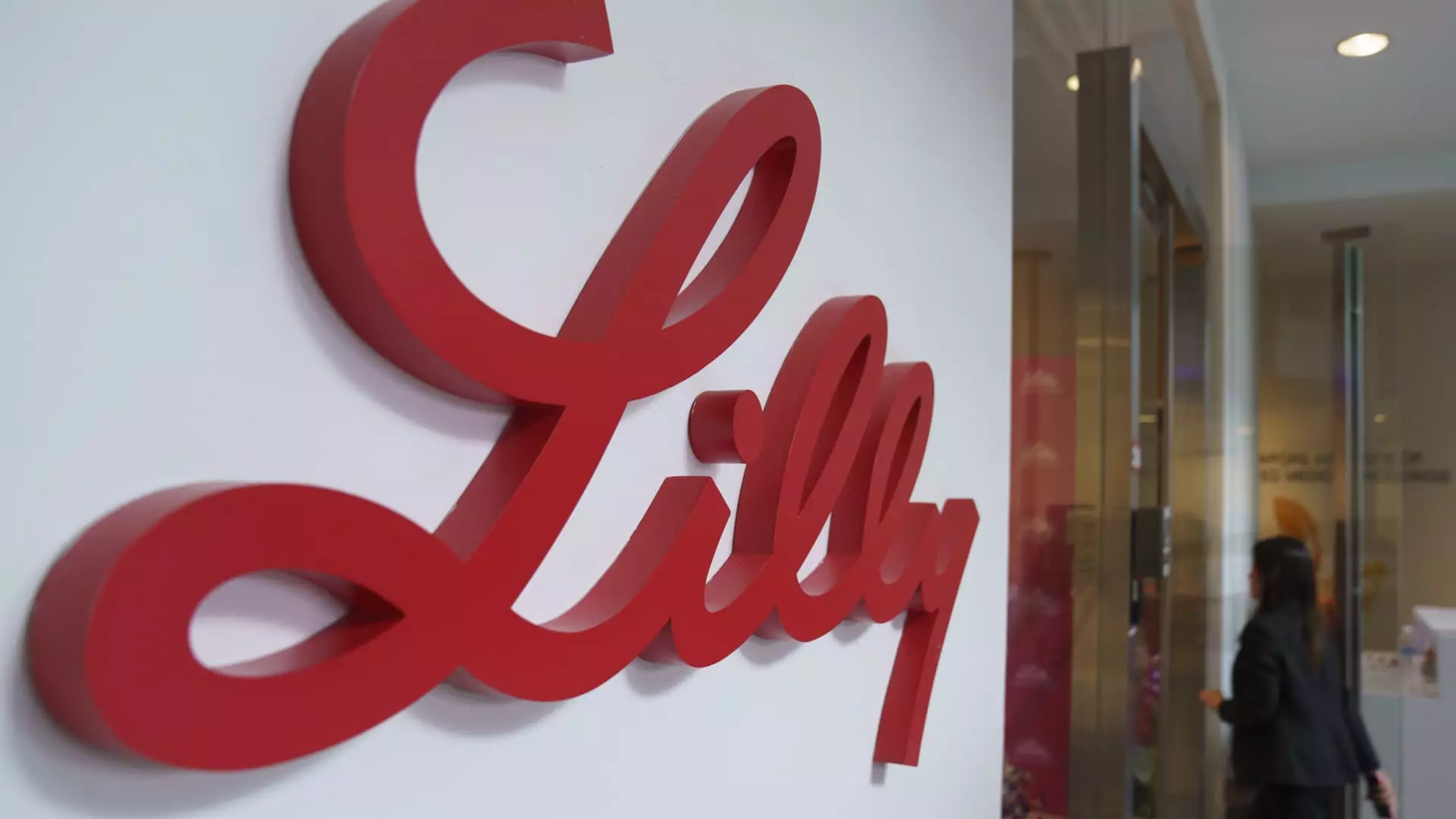Eli Lilly’s latest quarterly report paints a picture of a pharmaceutical titan riding the wave of explosive demand for its diabetes and weight loss medications. Touted as game-changers, drugs like Mounjaro and Zepbound have posted staggering revenue gains; Mounjaro alone raked in $3.84 billion, a phenomenal 113% increase compared to last year. On the surface, these numbers reflect a resounding victory in a sector that constantly grapples with competition and regulatory challenges. However, beneath this impressive façade lies an unsettling truth: profit estimates are falling, and uncertainty looms.
The company revised its earnings guidance for fiscal 2025, slashing expectations from a comfortable range of $22.50 to $24 per share down to $20.78 to $22.28. This decline was primarily influenced by a hefty $1.57 billion charge related to their acquisition of an oral cancer drug, a move that complicates the narrative of success. It raises pertinent questions: Can this booming revenue sustain itself in light of rising costs and potential market disruptions? The future of Eli Lilly hinges upon navigating these turbulent waters without capsizing due to unforeseen circumstances.
The Tariff Tango: Balancing Profits and Policies
In the world of pharmaceuticals, government tariffs can have a dual role—either acting as a protective measure or introducing crippling overheads. Eli Lilly’s CEO, Dave Ricks, expressed a cautious optimism regarding the potential benefits of tariffs, suggesting that they might catalyze a resurgence of U.S. manufacturing for essential drugs. Yet, this perspective, while appealing, oversimplifies the complexities involved. The current situation is reminiscent of political theatre; while the rhetoric around tariffs paints a utopian vision of domestic manufacturing jobs returning, the reality could be quite different.
Despite Ricks’ assertion that tariffs may foster a revival of the pharmaceutical manufacturing industry in the U.S., the projected profit drop indicates a deeper concern. For each hope-driven investment, there’s an inescapable risk of falling prey to the very regulations intended to stabilize the industry. The risk to earnings from impending tariffs could become a weighty anchor amidst the sea of revenue growth. As it stands, this pharmaceutical giant must tread carefully to ensure that ongoing investments do not become burdensome liabilities.
The Supply-Demand Imbalance: A Double-Edged Sword
Eli Lilly’s success story becomes more complicated when viewed through the lens of supply shortages. The soaring demand for Zepbound and Mounjaro, driven by their effectiveness in managing obesity and diabetes, reflects the dire need for innovative treatments in today’s healthcare landscape. Yet, this demand has far outpaced supply, casting shadows over the company’s ability to meet customer needs sustainably. As of now, the FDA has lifted its label of shortage for tirzepatide, but has that truly resolved the bottleneck problem?
In the relentless chase for market capture, the risks of overextending manufacturing capabilities must not be overlooked. With their rivals, such as Novo Nordisk, also investing heavily to meet similar demands, the industry landscape grows more competitive by the day. Continued reliance on skyrocketing sales, paired with a shaky supply chain, creates vulnerability. Should competitors successfully ramp up production faster than Eli Lilly, the very drugs that currently propel financial growth could become their Achilles’ heel.
Taxation Tensions: The Call for Change
Ricks’ call for permanent lower tax rates attending domestic production highlights a critical issue within the pharmaceutical sector. While this request appears sensible at first glance, it’s essential to unpack the motivations behind such appeals. Lower taxes tend to incentivize production shifts away from countries like Ireland and Singapore, back to U.S. shores. However, quite ironically, this push for lower corporate taxes stems from desperation for additional margins rather than a genuine commitment to domestic labor.
The current administration’s stance on pharmaceutical pricing and related reforms further complicates Eli Lilly’s positioning as they seek a favorable operating environment. A delicate balance must be found between rewarding innovation and ensuring accessibility of life-saving medications to consumers. If prices remain exorbitantly high in a bid to maintain profit margins, the public’s discontent may render Eli Lilly’s profitability a Pyrrhic victory—a win that invites backlash, regulatory scrutiny, and increased pressure for change.
Investing in Tomorrow: A Risky Gamble
Ultimately, Eli Lilly stands at a crossroads. Its impressive financial results might inspire shareholder confidence today, but the implications of management decisions and external pressures could very well redefine its future. The pharmaceutical landscape is one of high stakes and fierce competition, and while momentary success appears attainable, sustainable growth requires shrewd navigation and decisive action. Eli Lilly’s journey illustrates a stark reality: the pursuit of profit amid convoluted regulations, intense competition, and volatile market dynamics is nothing short of a perilous venture. The outcome remains uncertain, and only time will reveal whether this giant can stand tall or if it will falter under the weight of its own ambitions.

